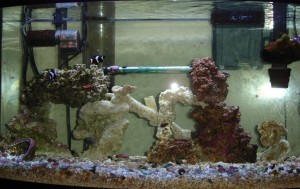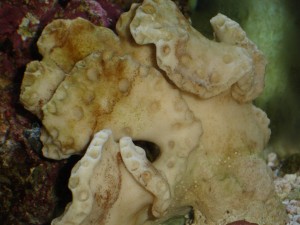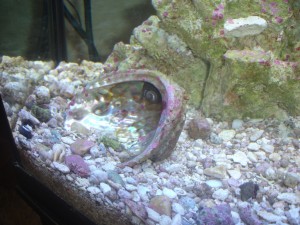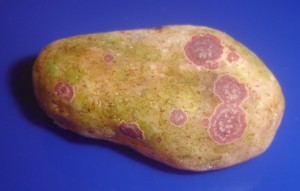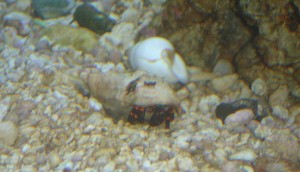Okay… Thursday I was thinking we would wait a few more weeks to get more live rocks. But, my parents are in town, and Mrs Salty Geek and I decided to take them to a couple of fish stores. We wound up leaving with a pile of live rock, and a few extras. At this point I’m happy with the amount of live rock that’s in the aquarium.
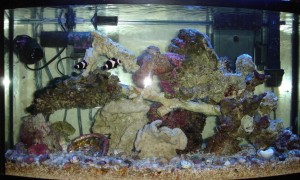
Aquarium 11/01/2009
This is the first post where I’m going to classify the aquarium as a marine reef aquarium. That’s because the live rock actually came with a few specimens of coral. The most visible is a few Red Mushrooms.
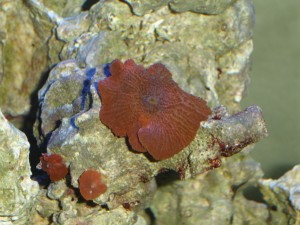
Red Mushrooms
You might ask, “how the heck did you find live rock with coral on it?” There are a few ways this is possible. First, people who are breaking down reef aquariums will sometimes sell live rocks with coral already established. Also, I’ve heard of stores purposely growing live rock with coral to increase the value. But in this case, it was pure luck.
We went to our favorite fish store, Aquatic Gallery, only to find that it had moved! Luckily, it hadn’t moved far. When got to the new site, we explained that we were looking for live rock. The normal bin of live rock we usually dig into hadn’t been moved yet, though. They offered to sell us live rock from some of the display cases that were in the process of being moved.
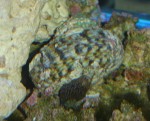
Escargot
Along with the coral, another guest managed to come along undetected: a large snail. You can see him in the picture to the right. This snail wasn’t 5 minutes in the water before Jacky, the Halloween Hermit Crab, noticed him. Since this snail’s shell is larger than Jacky’s current home, she decided to try to shell jack this new shell, with the snail still in it! I had read that hermit crabs will sometimes take shells from live snails, but I didn’t expect it this time. Jacky’s shell does seem a little small for her, but this one is much too big.
Since this new snail was a guest for such a short time, I broke up the fight. I put the two of them in neutral corners and gave them the 10 count. Since they weren’t able to find each other, I have to assume they called the first round a draw.
Of course, with a character like this, fighting the first few minutes in the aquarium, he has to have a name. We’ve decided to call him “Escargot“. You may think this is a cruel name for a snail, but I named our cat “Road Kill” years ago, and she doesn’t seem to mind. I figured Escargot wouldn’t mind either.
This time I really do plan to wait at least a month before introducing more coral. I need to make sure that none of the live rock or any other unexpected guests spike the Nitrogen levels.



